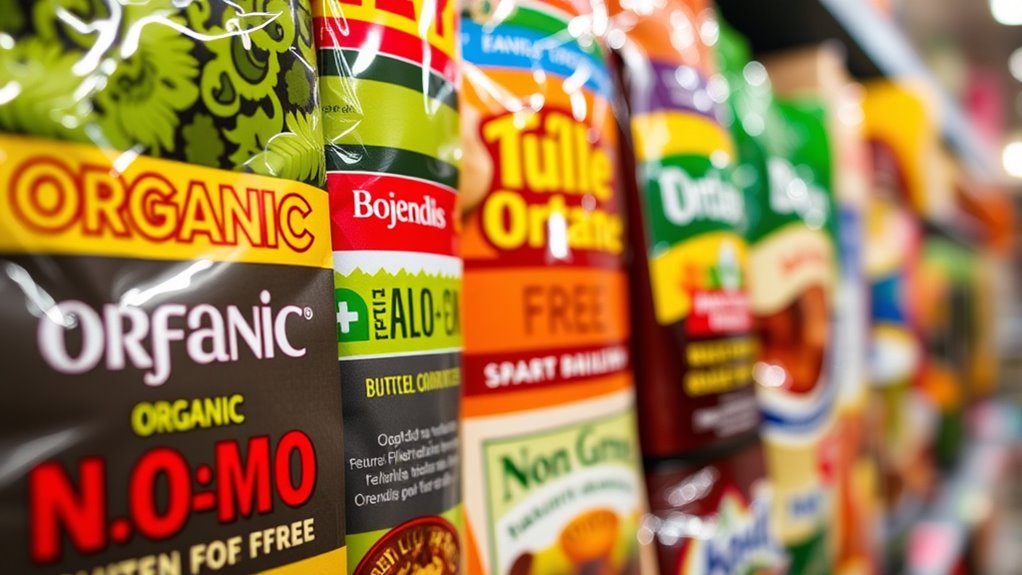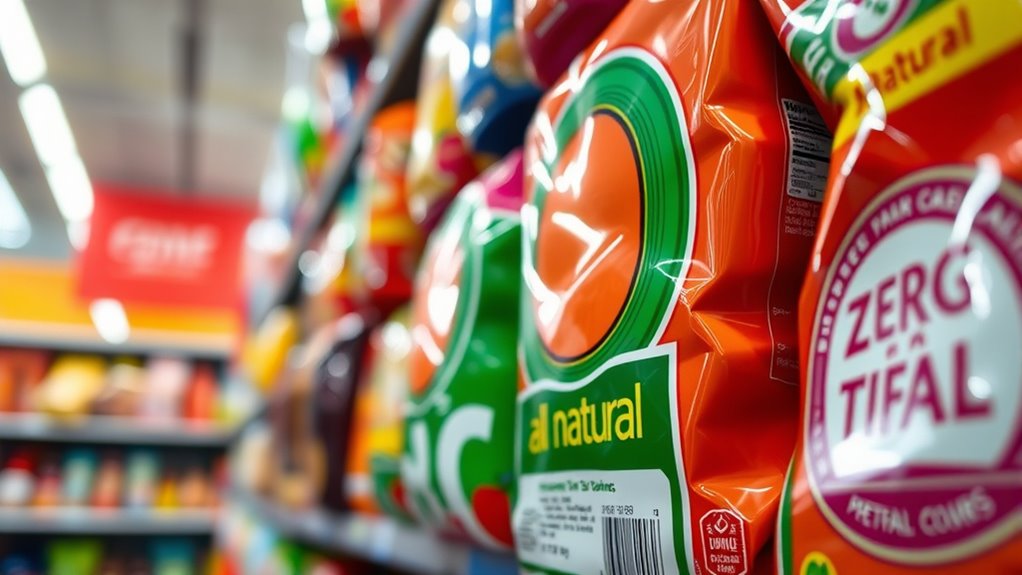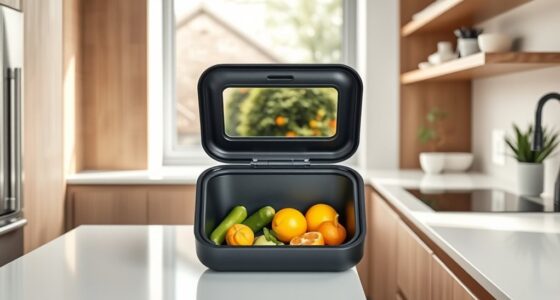When you see packaging claims like “all-natural,” “eco-friendly,” or “clinically proven,” it’s important to distinguish marketing language from facts. Look for specific certifications or detailed ingredient lists to verify these claims. Vague words like “green” or “sustainable” often need supporting proof. Transparency about ingredients and eco practices shows honesty. Keep an eye out for supported claims, and you’ll gain the skills to spot true benefits versus clever advertising. If you keep exploring, you’ll master the art of decoding packaging messages.
Key Takeaways
- Verify claims like “all-natural” or “eco-friendly” with certifications and detailed ingredient lists for authenticity.
- Check ingredient transparency to understand exactly what’s inside and assess potential health impacts.
- Look for credible eco labels that indicate sustainable practices and avoid vague terms like “green” or “planet-friendly.”
- Distinguish marketing buzzwords from factual information by examining supporting certifications and detailed product info.
- Recognize that ingredient lists reveal true product composition, helping you decode what claims really mean.

Have you ever wondered what a packaging claim really means? When you pick up a product and see phrases like “all-natural,” “eco-friendly,” or “clinically proven,” it’s easy to assume certain benefits without fully understanding what they imply. Deciphering these claims requires a keen eye and a bit of knowledge about how products communicate their value. For instance, ingredient transparency is a vital aspect that often gets overlooked. Many brands now highlight ingredient transparency to show you exactly what’s inside their products, which helps you make informed decisions. Instead of vague descriptions, they list ingredients clearly, giving you confidence in what you’re using. This openness can also reflect a company’s commitment to honesty and quality, encouraging trust in their brand.
Similarly, eco-friendly labeling is a common claim that’s often used to appeal to environmentally conscious consumers. But not all eco labels mean the same thing. Some products are genuinely eco-friendly, made with sustainable materials, and produced with environmentally responsible practices. Others might use vague terms like “green,” “natural,” or “planet-friendly” without backing these claims with certified standards. When you see these labels, it’s important to look for specific certifications or details on the packaging that verify the claims. A product with an eco-friendly claim might be recyclable, biodegradable, or made from sustainable resources, but if that’s not clearly stated, the label could be more about marketing than actual environmental benefit.
Understanding packaging claims also involves recognizing the difference between marketing language and factual information. Be cautious of buzzwords that sound impressive but lack substantiation. For example, a product claiming to be “99% natural” might still contain synthetic ingredients or preservatives, so it’s better to check the ingredient list. Likewise, a brand that promotes ingredient transparency often includes a detailed list or even a breakdown of ingredient functions, which helps you see exactly what’s in your product and how it might affect you.
Frequently Asked Questions
How Can Consumers Verify the Accuracy of Packaging Claims?
You can verify packaging claims by checking for ingredient transparency and researching the brand’s reputation. Look for clear ingredient lists and eco-friendly labels that specify sustainable practices. You should also visit the company’s website for detailed info and third-party certifications, like USDA Organic or Fair Trade. Don’t hesitate to contact customer service for clarification. This way, you guarantee the product aligns with your values and is truly what it claims to be.
Are There Legal Standards for Packaging Claim Authenticity?
You can’t judge a book by its cover, but you can trust regulatory standards and advertising regulations to guarantee packaging claim authenticity. These legal standards require companies to back up their claims with evidence and prohibit false or misleading statements. While enforcement varies, knowing that such regulations exist helps you spot credible claims. Always stay vigilant and check for certification labels or disclaimers to verify a product’s honesty.
What Common Misleading Phrases Should Shoppers Watch Out For?
Watch out for phrases like “all natural,” “eco-friendly,” or “made with,” which can be misleading without ingredient transparency. These claims often imply health benefits or sustainability, but may not be fully backed by facts. Always check labels for detailed ingredient lists and certifications. Be cautious of branding that focuses on eco-friendly imagery without clear proof, as companies may use eco-friendly branding to appeal to environmentally conscious shoppers without genuine transparency.
How Do Companies Use Packaging Claims for Marketing Purposes?
Did you know that 60% of consumers are fooled by label exaggerations on packaging? Companies use eco-friendly buzzwords like “green” or “sustainable” to boost sales, even if their products aren’t genuinely eco-friendly. They leverage packaging claims for marketing by creating appealing visuals and catchy phrases that evoke positive emotions, encouraging you to choose their product over competitors. Always stay critical of these marketing tactics to make informed choices.
Can Packaging Claims Influence Purchasing Decisions Significantly?
Yes, packaging claims can notably influence your purchasing decisions. When you have strong label literacy, you’re better at spotting false or misleading claims, which helps you make informed choices. However, consumer skepticism is common, especially when claims seem too good to be true. By staying critical and analyzing packaging carefully, you can avoid being swayed by marketing tricks and select products that genuinely meet your needs.
Conclusion
By learning to decode packaging claims, you can make smarter choices and avoid being misled. Did you know that 60% of consumers admit to being confused by packaging labels? Now, armed with this knowledge, you can spot false or exaggerated claims and select products that truly meet your needs. Next time you shop, take a moment to read the labels carefully — your wallet and health will thank you!








